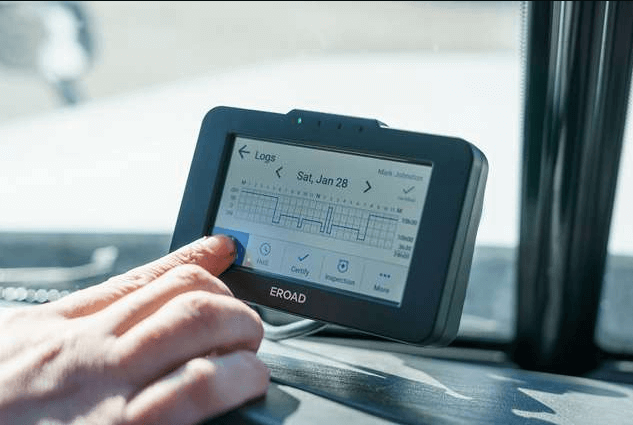How Electronic Logging Devices Improve Fleet Efficiency and Safety

Fleet managers can use ELDs to monitor engine idling and optimize routes to save fuel costs. They also provide insights on destructive driving behaviors like excess acceleration and hard braking to improve driver safety and reduce the risk of accidents and liability claims.
Most motor carriers use ELDs to comply with government regulations such as the HOS mandate and streamline vehicle inspections (DVIR). But, these devices can offer much more than compliance.
Increased Productivity
Most commercial fleets use ELDs to record driver hours of service (HOS) as mandated by the Federal Motor Carrier Safety Administration (FMCSA). However, ELD technology can improve fleet efficiency and safety in many other ways.
By analyzing HOS data, fleets can learn how to optimize routes and increase productivity. This can save on labor and fuel costs while improving the efficiency of deliveries.
When choosing an ELD system, look for one that is FMCSA-approved and easy to install. Additionally, ensure the device is tamper-resistant and offers a simple interface that is intuitive for drivers and fleet managers. Then, choose a vendor that provides an all-inclusive solution for one monthly fee with no add-on fees. Samsara is an excellent choice for fleets looking to get the most out of their ELD investment.
Reduced Fuel Costs
ELD systems can help fleets reduce fuel costs by automatically recording driving hours and tracking vehicle movement. These systems also provide real-time GPS data for dispatch and compliance managers. They can be used as a standalone solution or with a smartphone or tablet to record driver logs and ensure compliance with the ELD mandate (ELD trucking rule) and other federal regulations like Driver Vehicle Inspection Reports (DVIR).
While most people invest in electronic logging devices for their HOS management capability, they can also boost productivity by helping drivers minimize fatigue-related accidents. They also simplify regulatory compliance and streamline inspections. In addition to reducing fuel consumption, the GPS tracking features of an ELD system can optimize routing and reduce idle time. This helps fleets save money on fuel and improve their bottom line.
Improved Safety
ELDs are mandated by the FMCSA, and though some drivers may consider them an invasion of privacy or have difficulty getting used to them at first, they are crucial for fleet owners. They help reduce the administrative work involved in tracking hours of service, boost safety by minimizing driver fatigue, and simplify inspections.
Read also: Navigating the World of Website Builders: The Rise of Quarkly
Advanced ELD solutions also offer features that make them valuable tools for fleets of all sizes and industries. For example, less-than-truckload (LTL) carriers benefit from real-time GPS data, enabling them to share live ETAs with brokers and increase revenue per load.
In addition, modern ELDs can also record vehicle power status, engine hours, mileage, identification information, unassigned miles, driver vehicle inspection reports, and more. This data can be helpful for training drivers on safer driving habits and backing up drivers during a crash.
Reduced Insurance Costs
ELDs automate HOS tracking, allowing drivers to record their hours of service and vehicle movement data electronically. This streamlines fleet management and eliminates the need for paper logbooks, preventing costly mistakes and improving efficiency.
ELD technology provides numerous additional benefits to fleets beyond compliance with FMCSA regulations. For example, advanced telematics solutions offer driver vehicle inspection reports that can be sent from the device to save time and prevent roadside inspection delays.
Additionally, fleet managers can get valuable insights from robust reporting features that allow them to identify idling time and harsh driving events by driver or vehicle. This helps them improve driver safety and minimize fuel costs, reducing insurance costs. These benefits can help reduce liability and increase productivity and overall profitability for your trucking company.
Increased Customer Satisfaction
ELDs monitor drivers’ engine and GPS data, creating duty status logs. These devices can help fleets stay FMCSA compliant, reduce fuel costs, and improve driver performance and vehicle safety.
Modern ELD devices can provide more information than just compliance, like route planning tools that save on fuel, digital maintenance scheduling, and idling alerts to reduce engine downtime. These features can increase fleet productivity and profitability, improving customer satisfaction.
When selecting an ELD solution, it’s essential to consider the device hardware, a professional installation (if needed), and the software cost. Some providers require that you purchase proprietary accessory devices, while others offer a “bring your device” (BYOD) solution to minimize up-front costs. Many provide an all-in-one FMCSA-approved ELD system that includes all these essential features for a low monthly fee.







